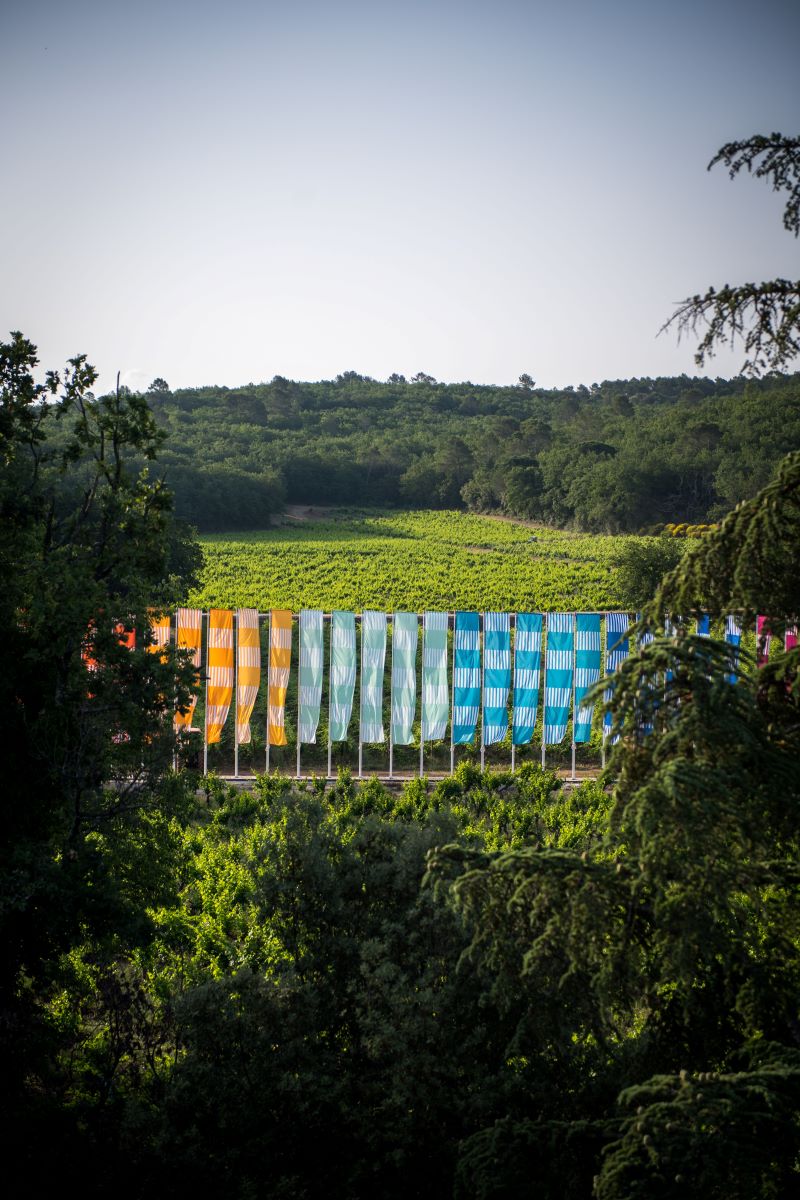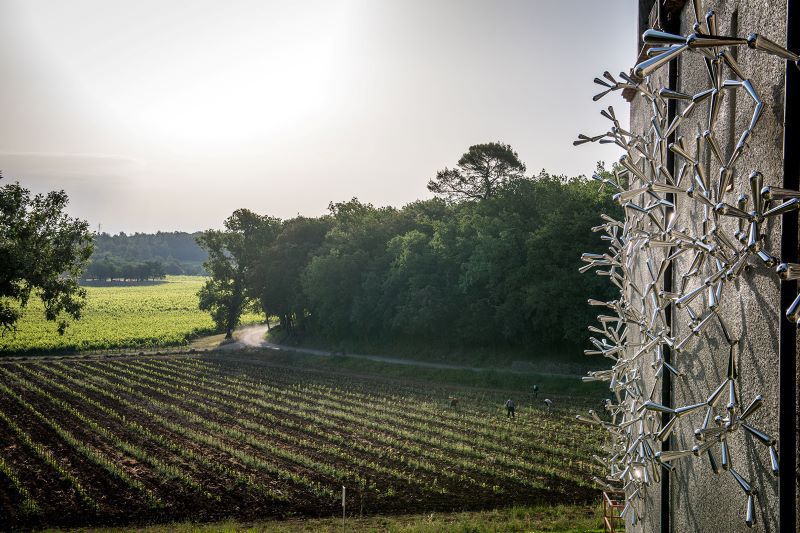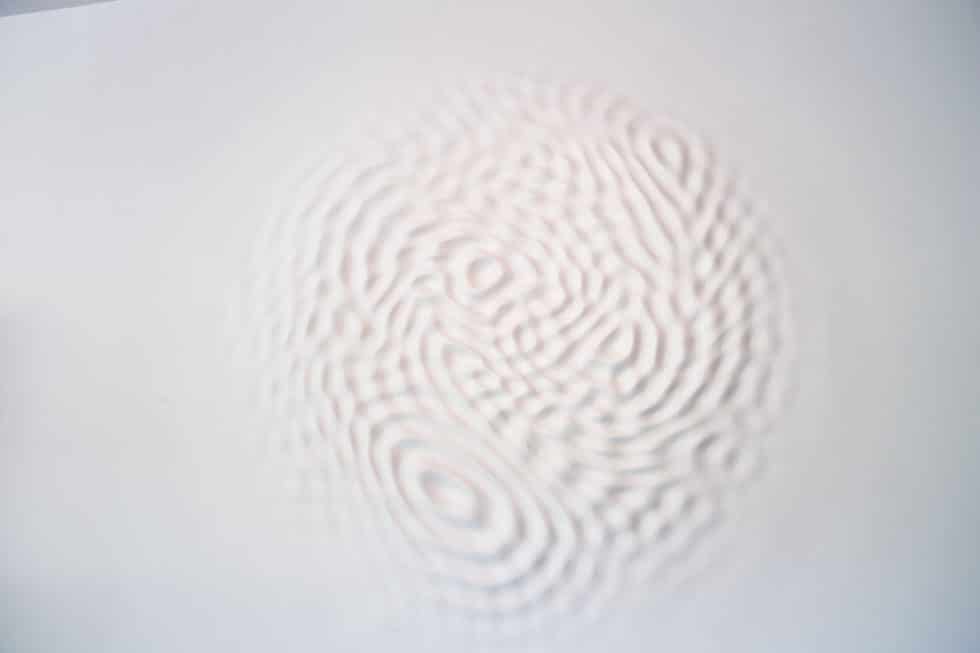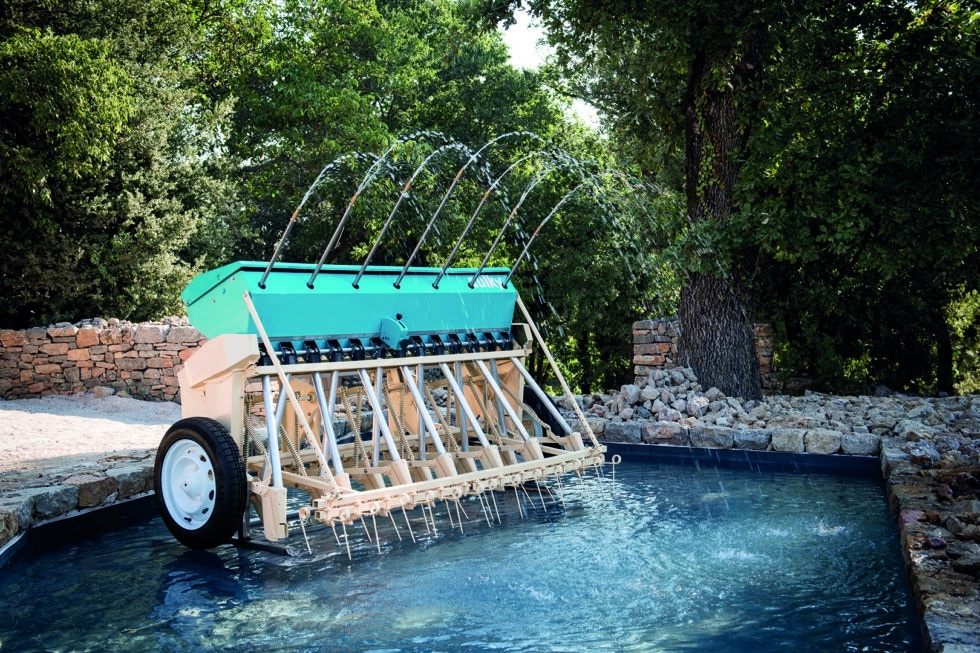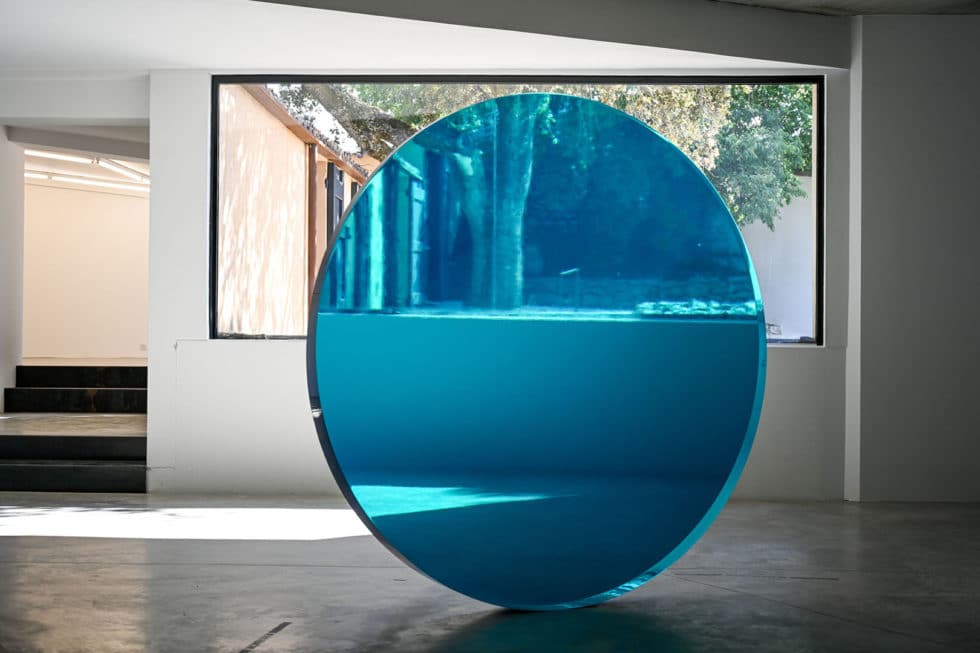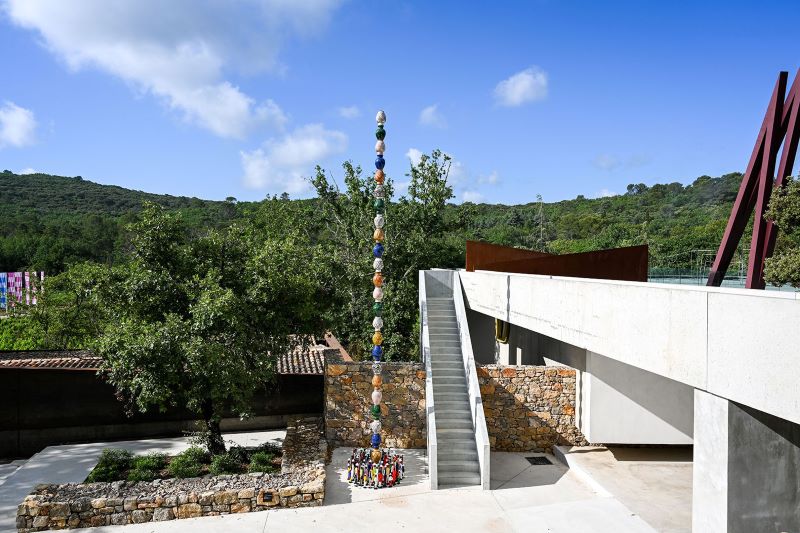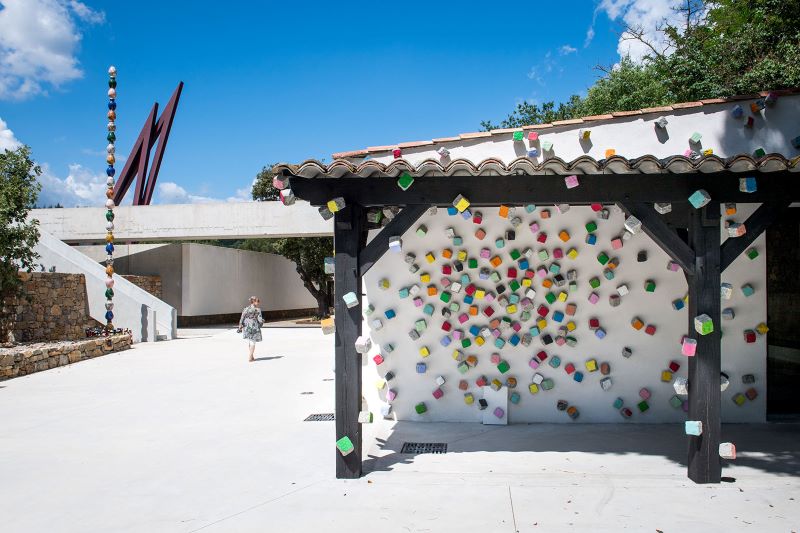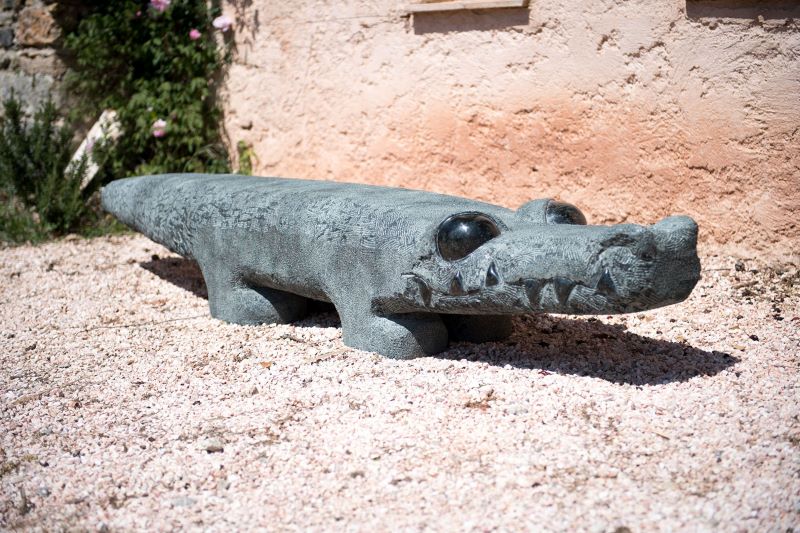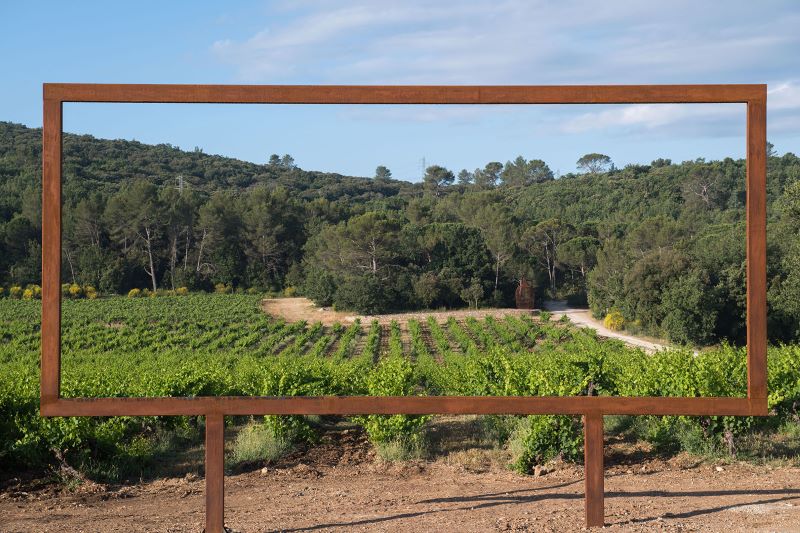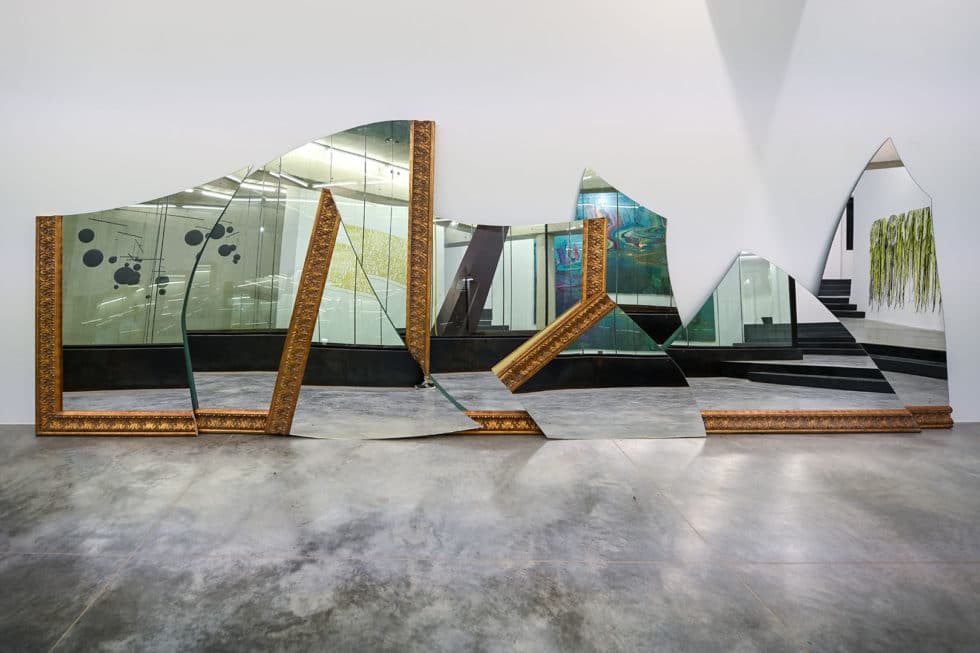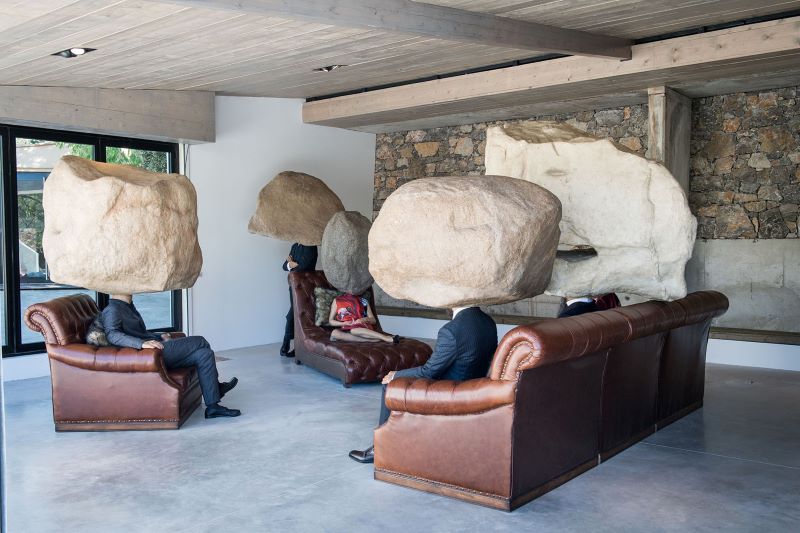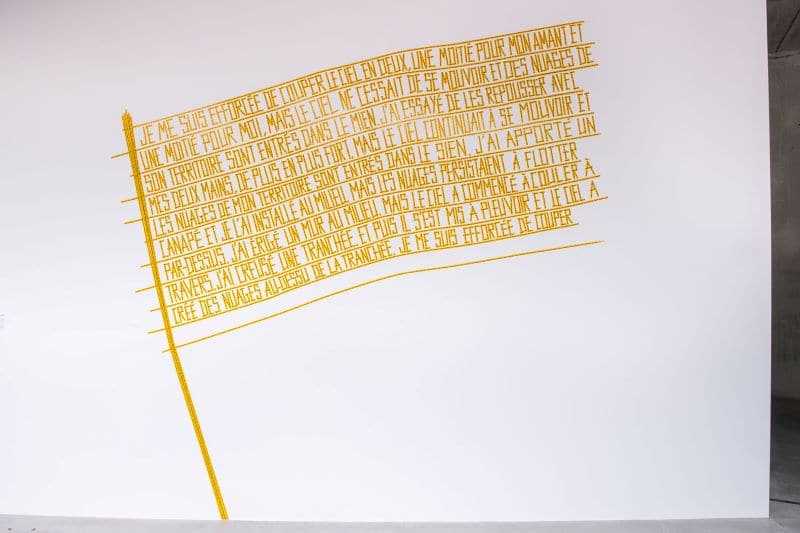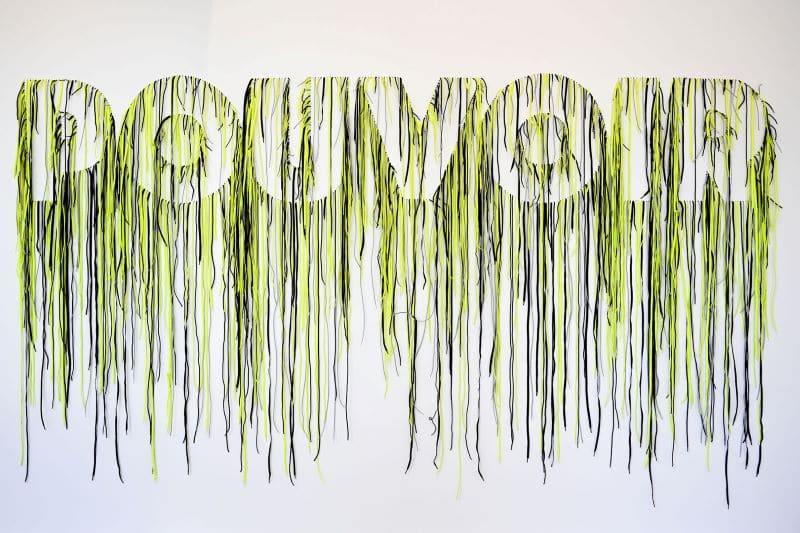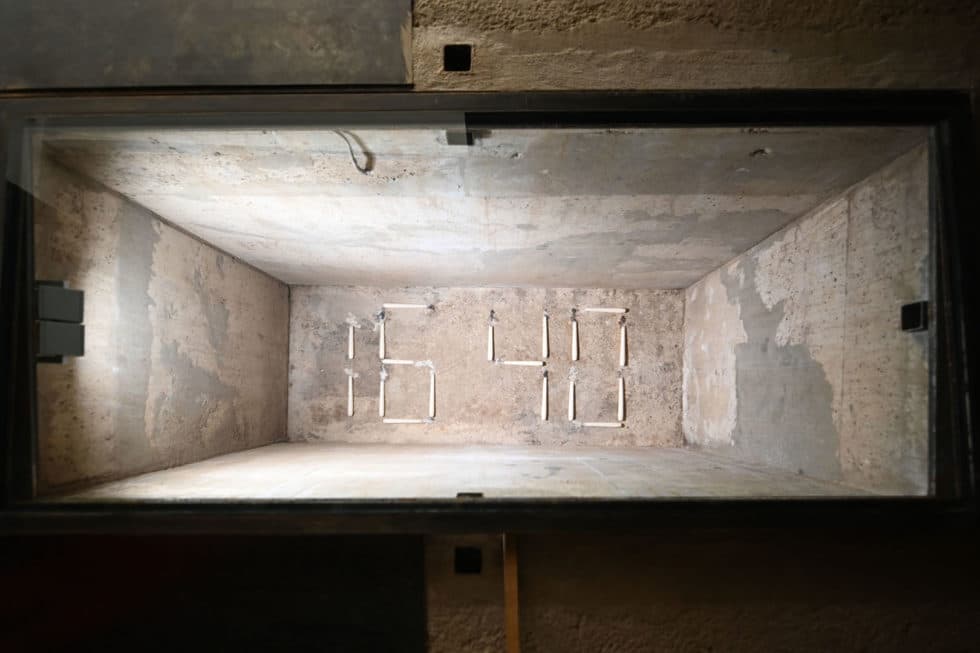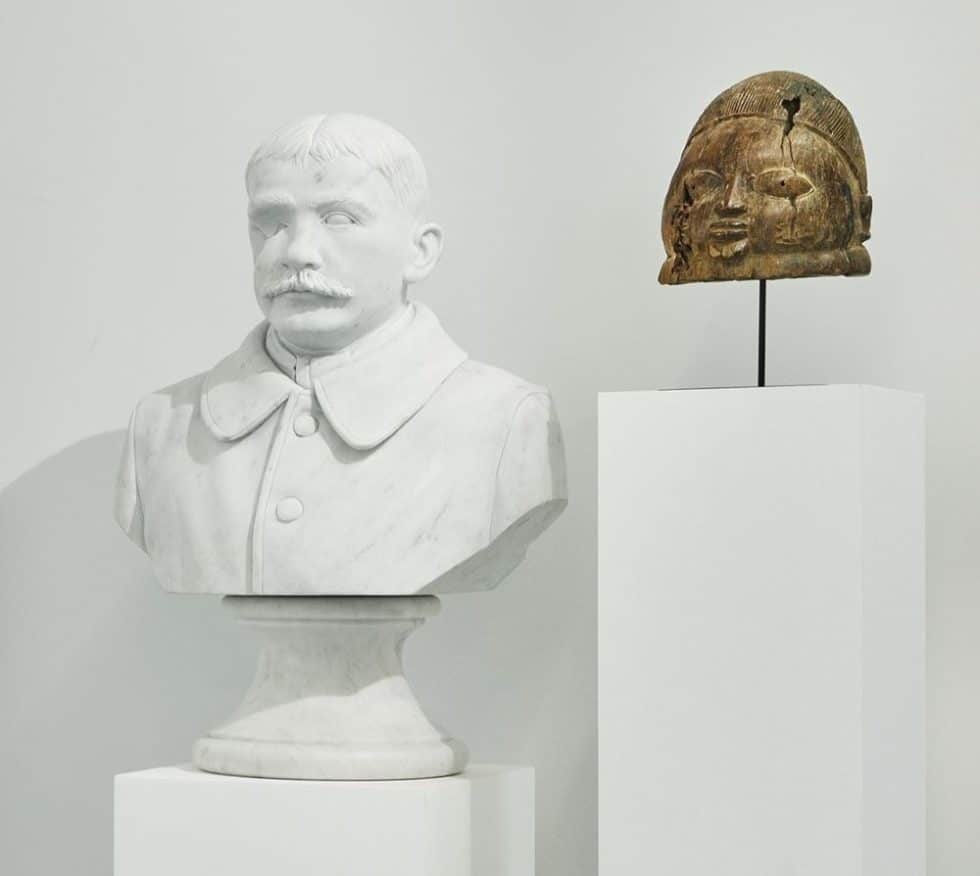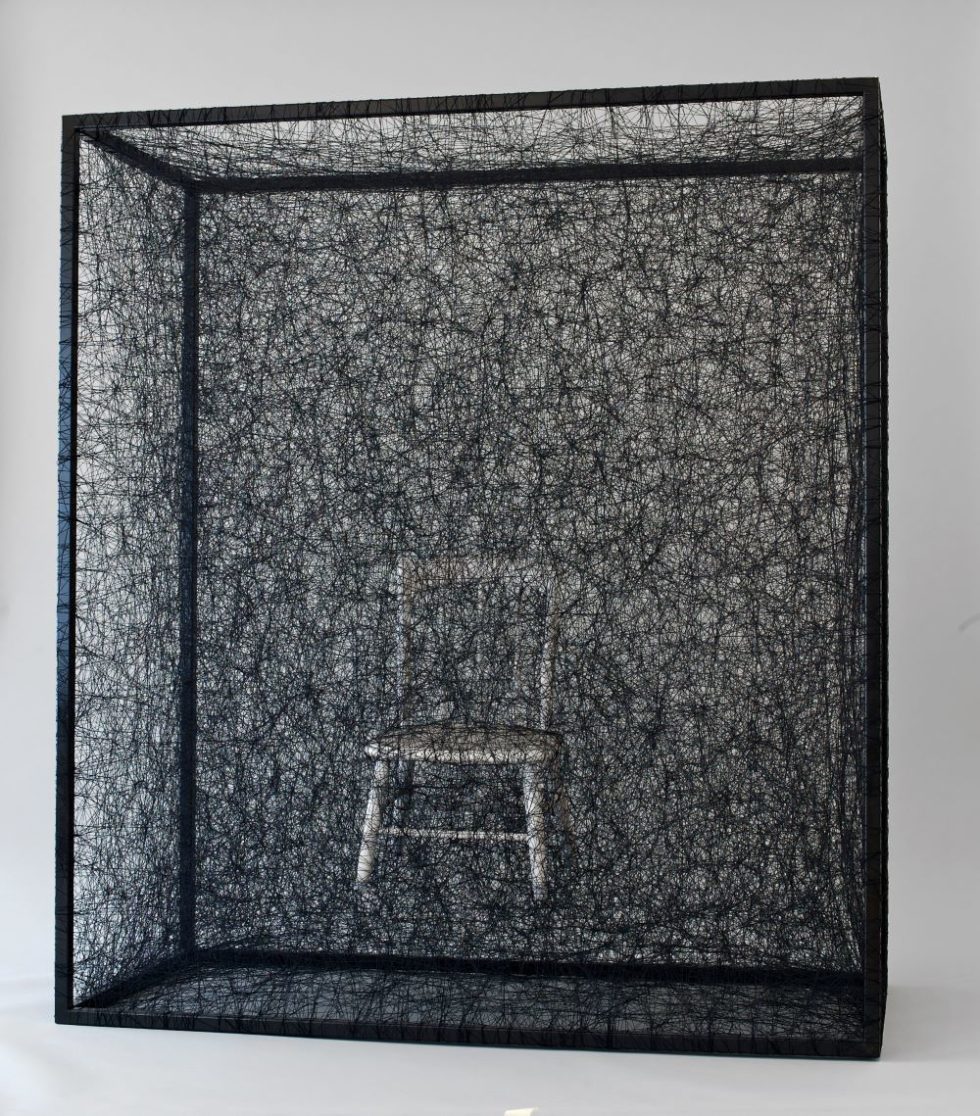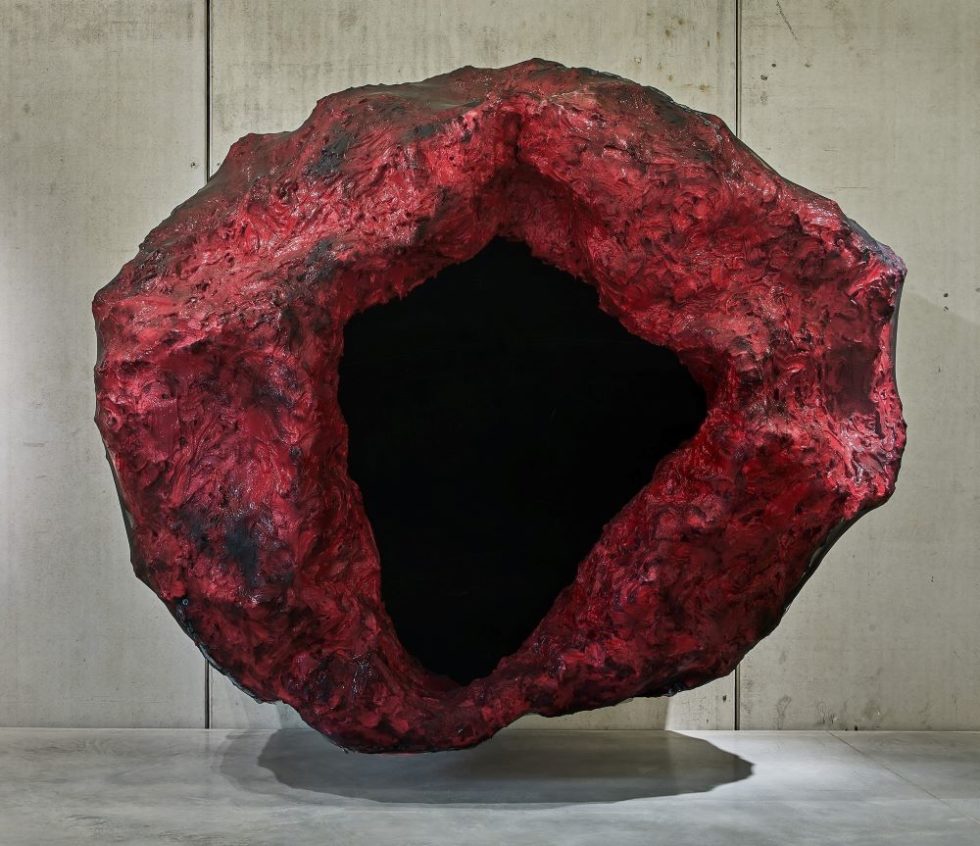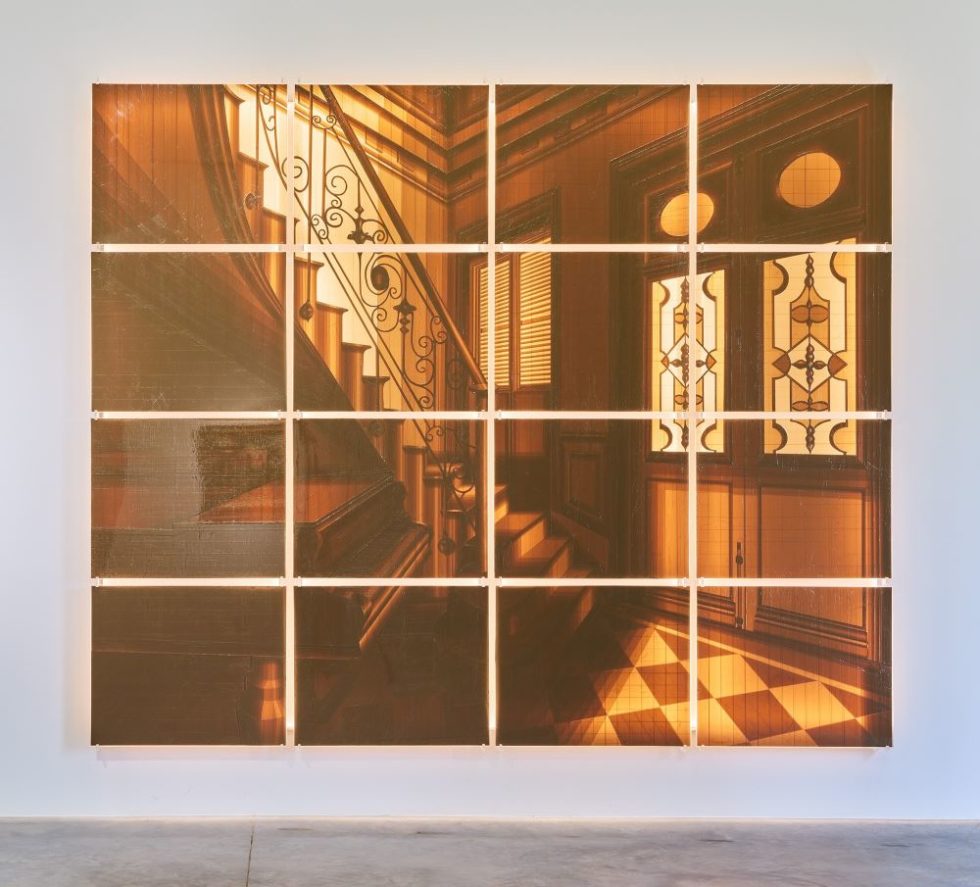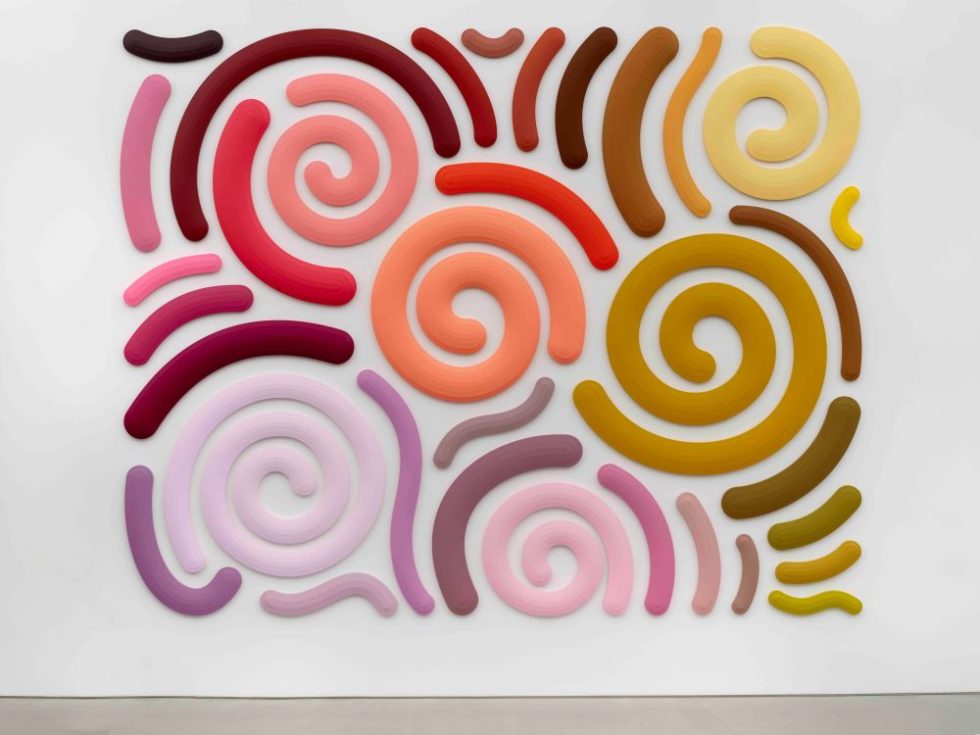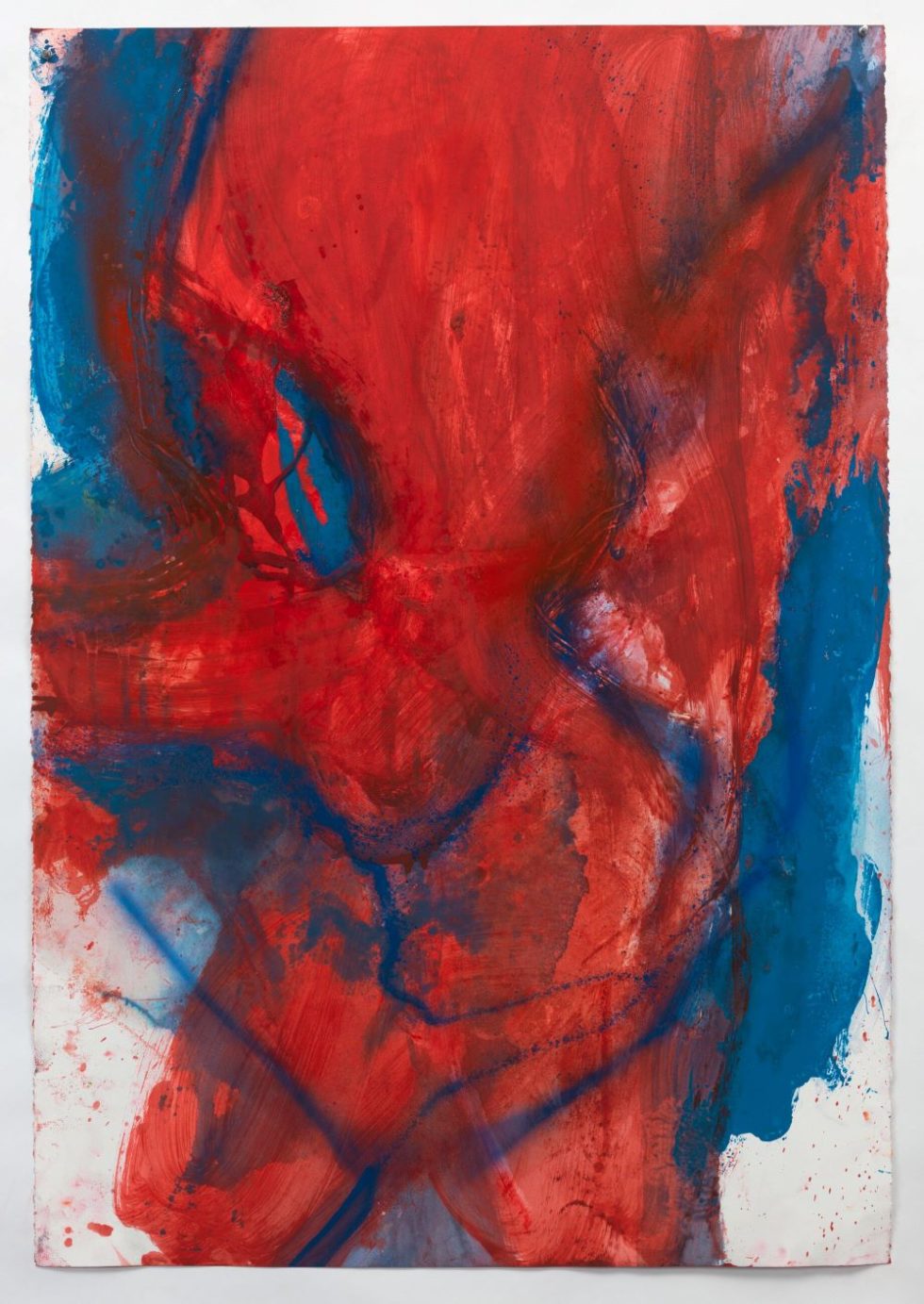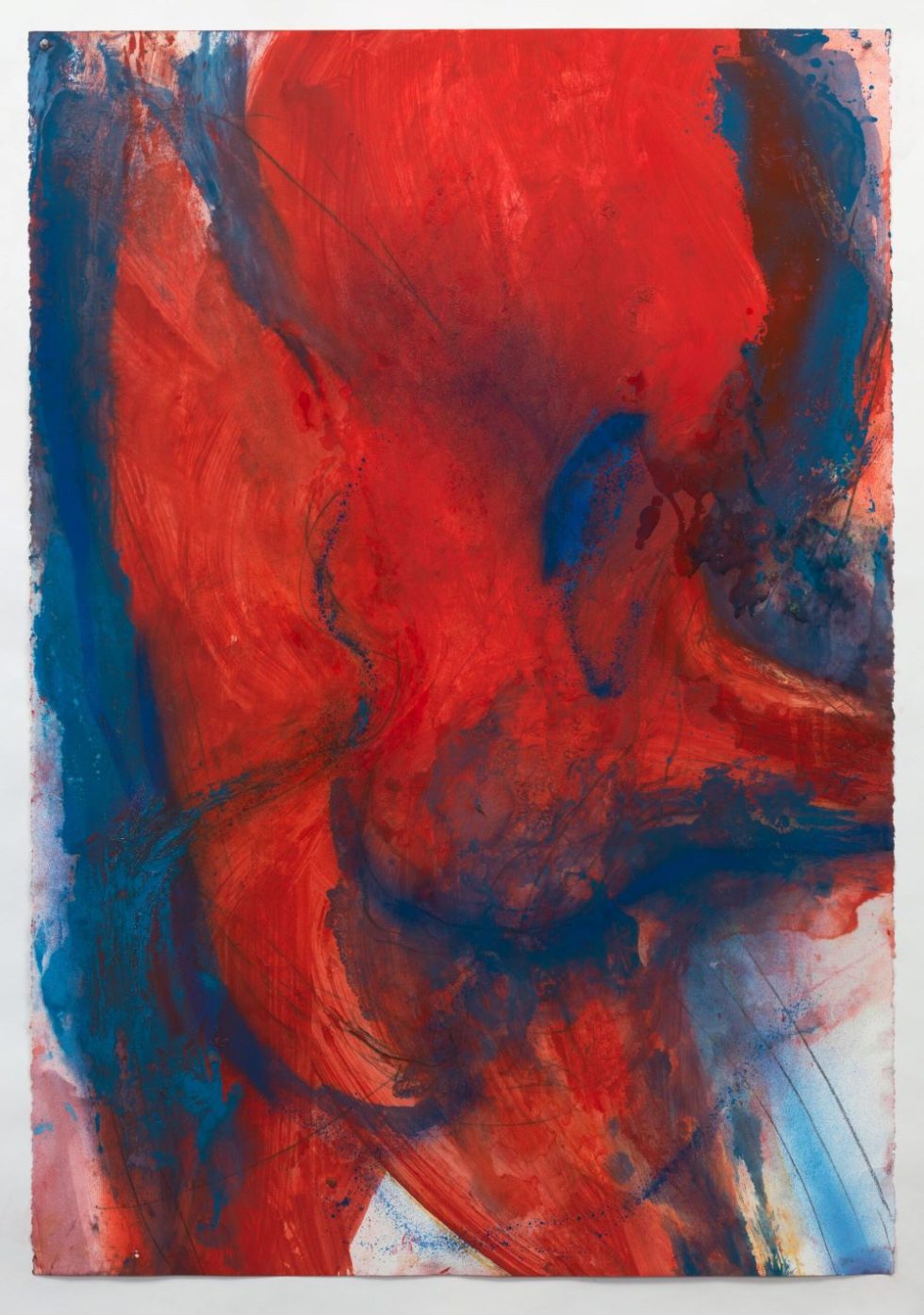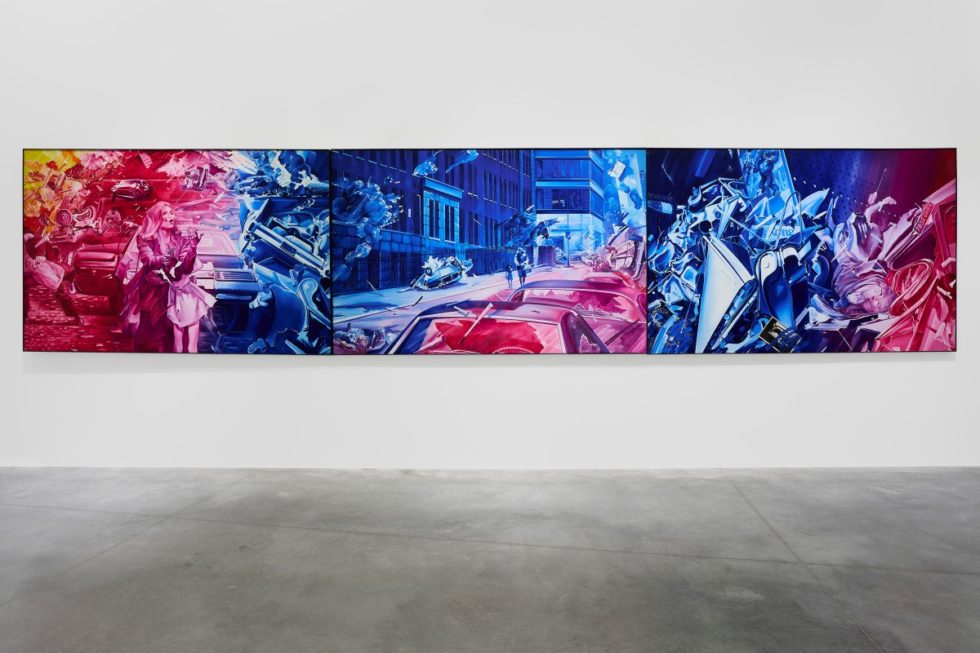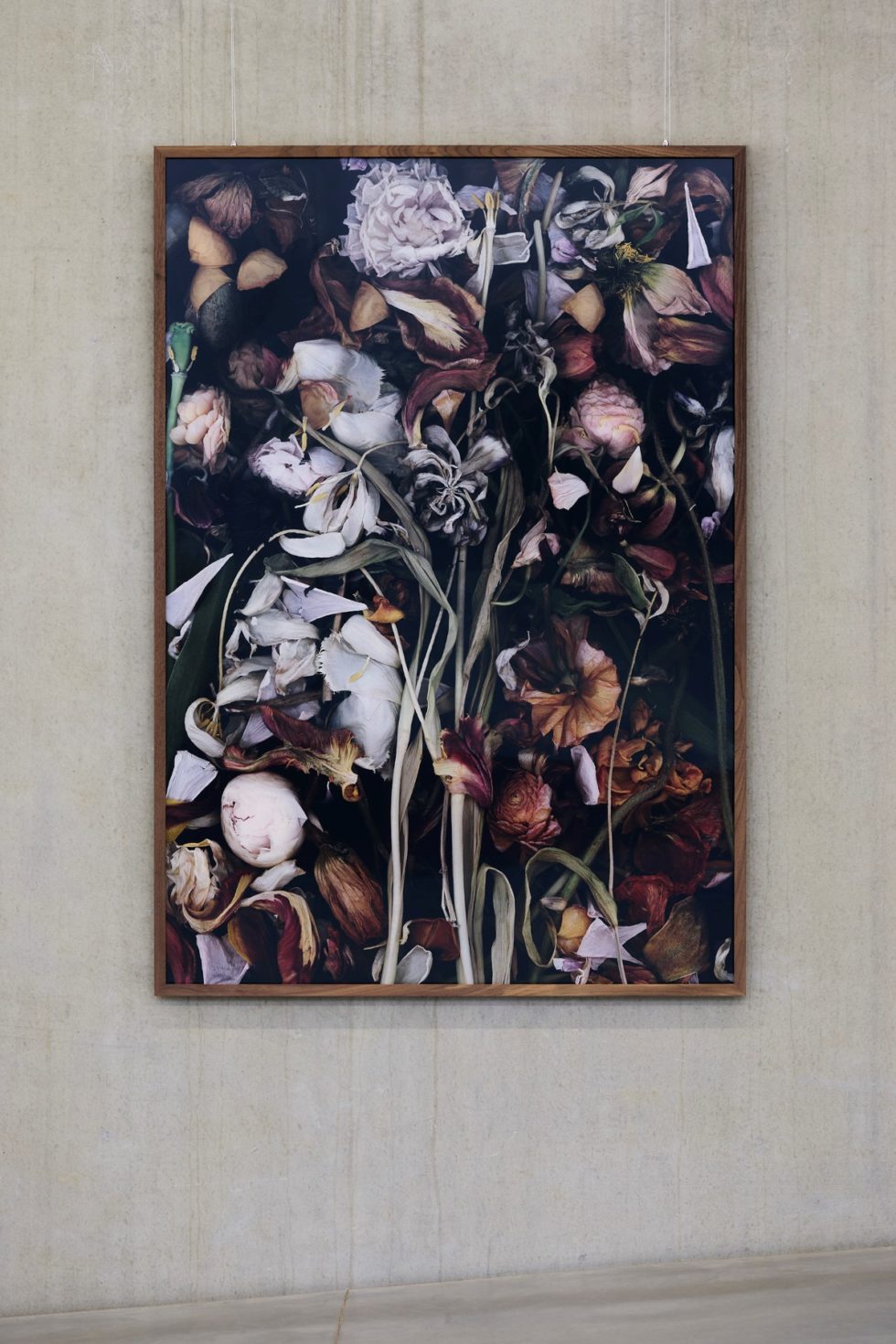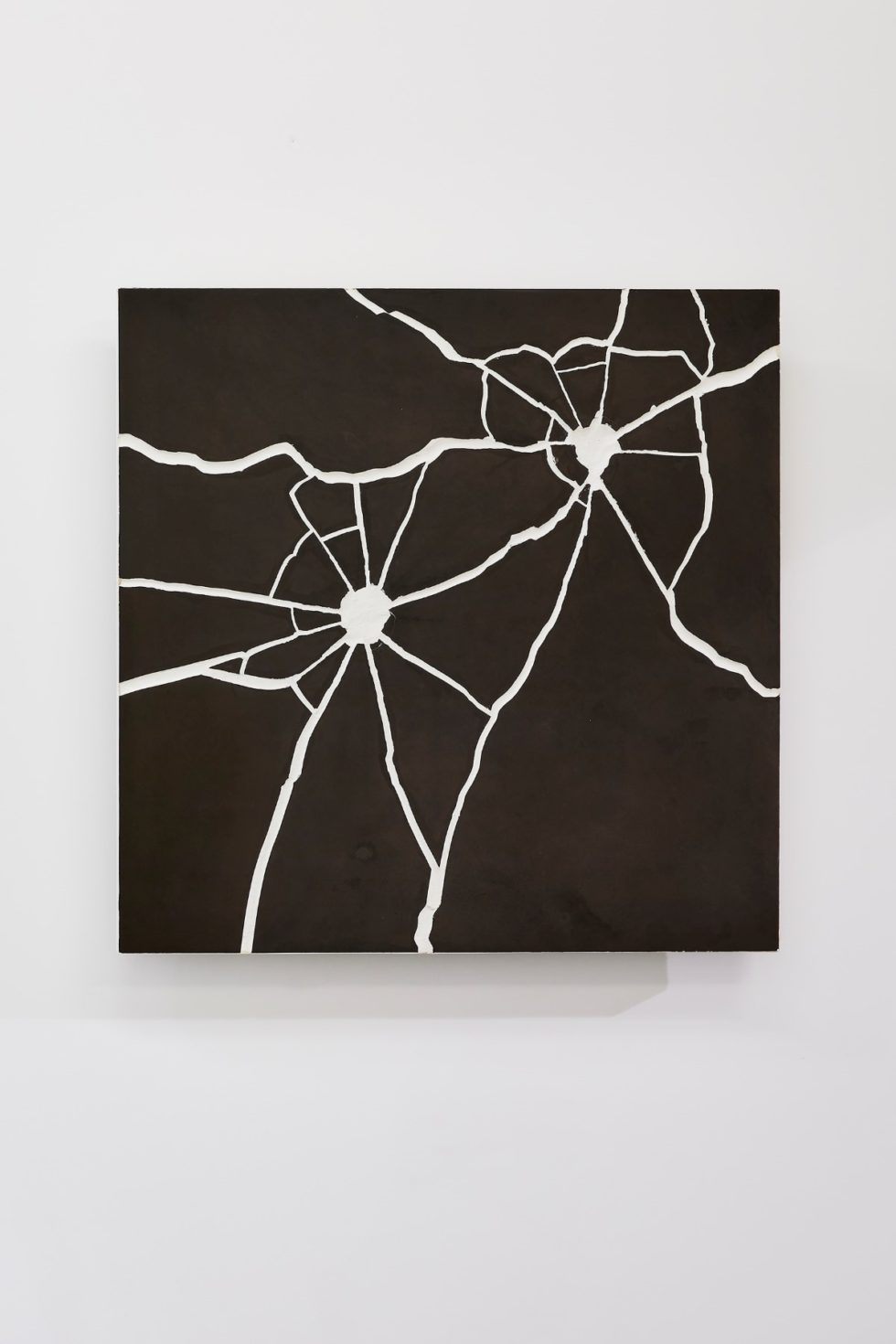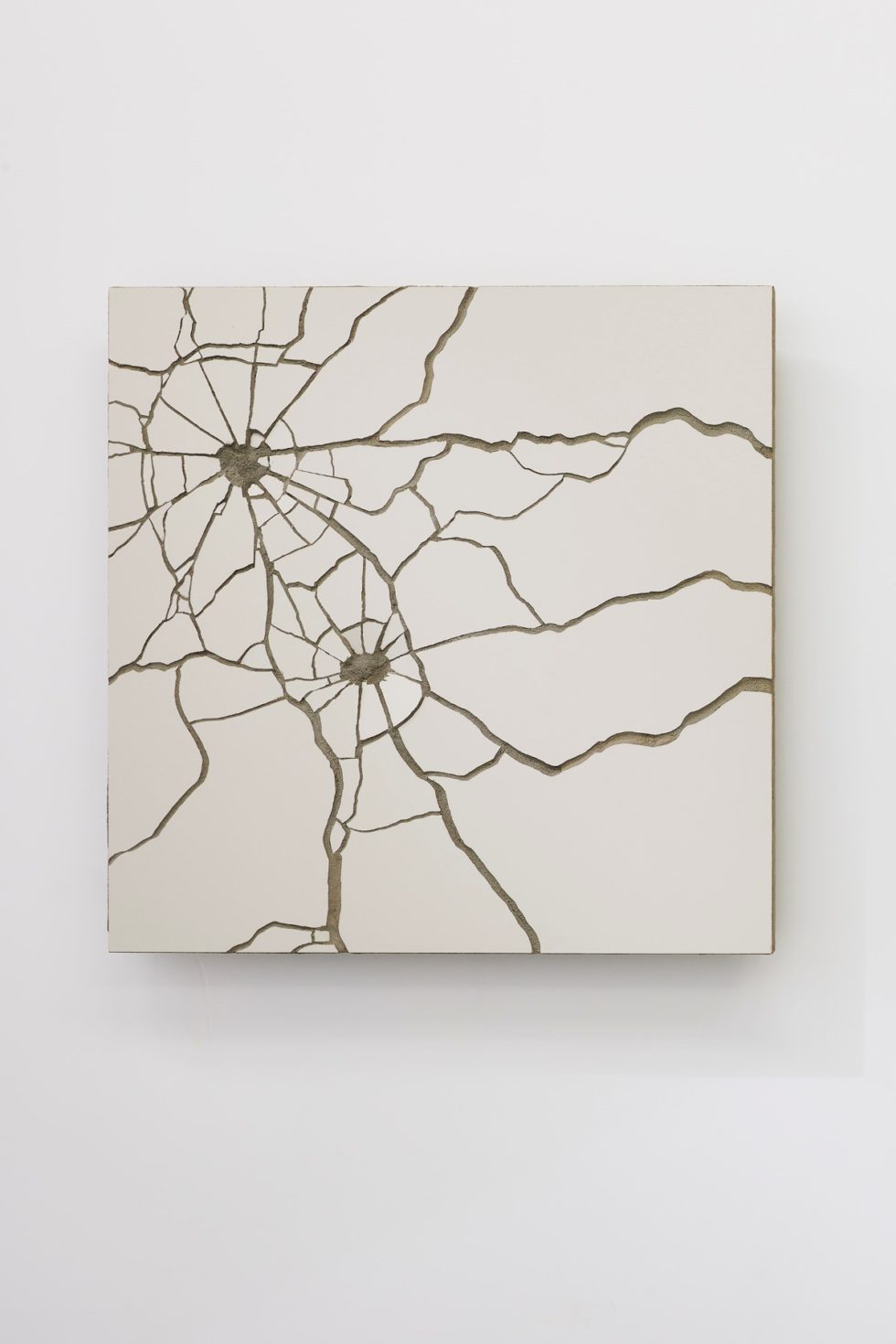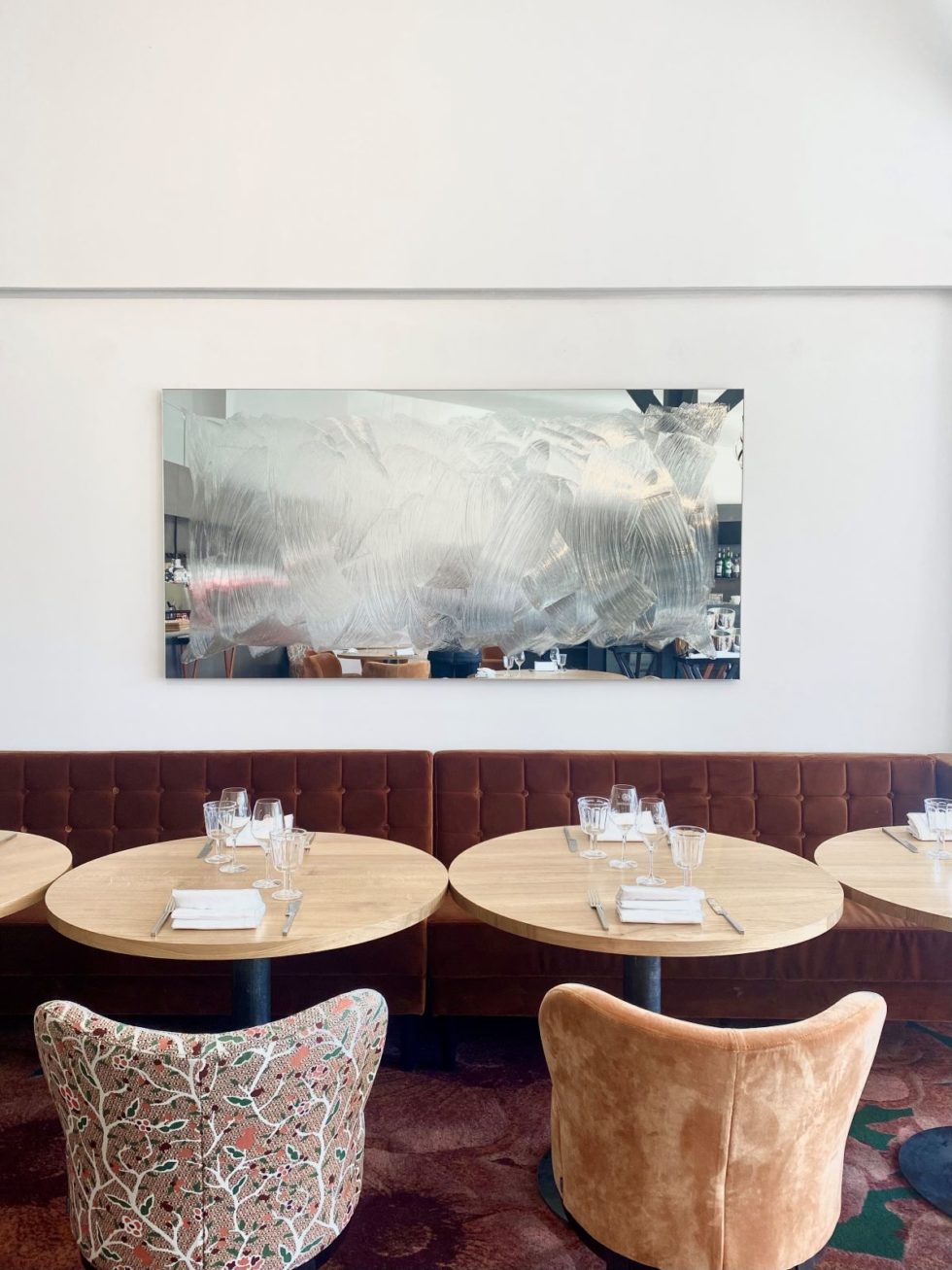A LIVING COLLECTION
Every year new masterpieces arrive at the Commanderie de Peyrassol. Monumental pieces, installations in situ or great favourites that contribute to the constant renewal of the Philippe Austruy Collection. In 2024, ten new works thus augment this collection, already rich with a hundred artworks.
Marthe Wéry
(1930-2005, Belgium)
Untitled, “Montréal D16” series, around 1987
An eminent figure in the art of the 1970s, Marthe Wéry gradually abandoned form in favor of a material and chromatic exploration of the painting, which she treated in an ambivalence between painting (hung on the wall) and architecture (“a painting that spreads through space,” she explains). Thus, chromatic tones, surface, support, and arrangement, enter into a dance that reveals the monochrome in its most delicate variations.
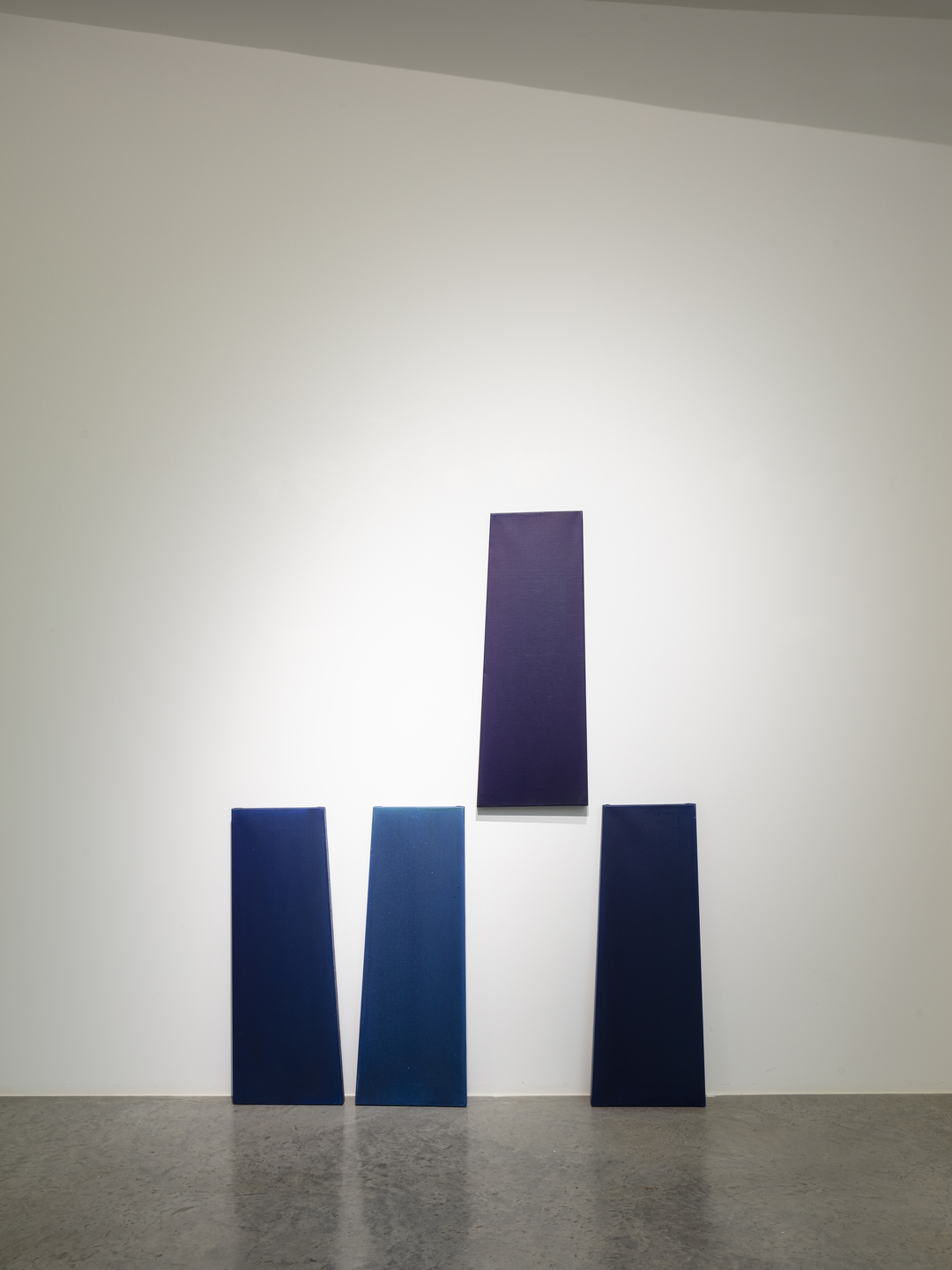
© Olivier Monge /Myop
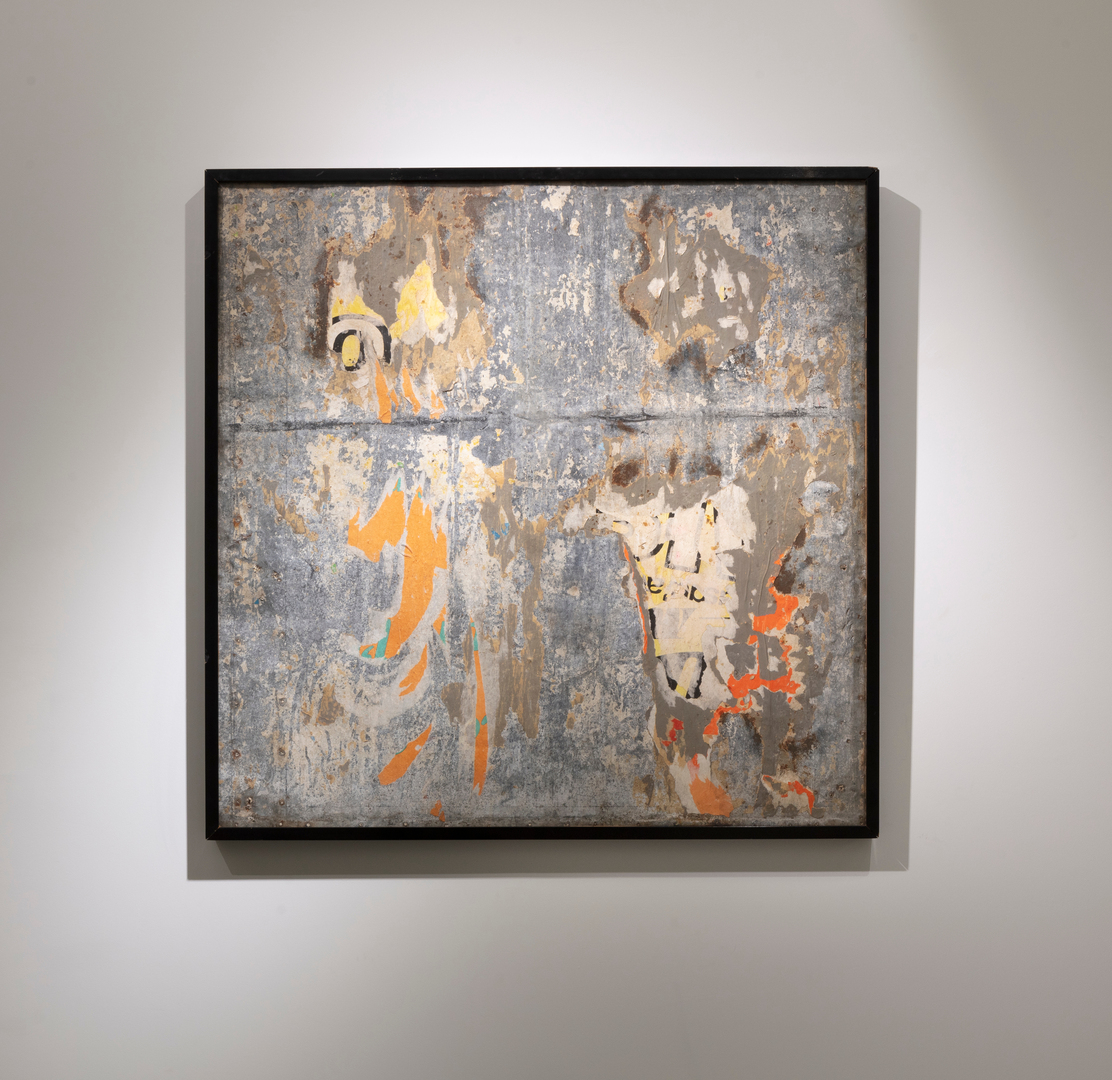
© Olivier Monge /Myop
Raymond Hains
(1926-2005, France)
Tôle, 1963
From the early 1950s, Raymond Hains began collecting posters plastered on the streets, which were torn or peeled off by passersby. By taking these colorful sheets as they were, they became the subject of a work that makes the street—and the modern life unfolding there—the focus of a piece directly engaged with reality. In 1960, alongside his fellow “affichists” such as Jacques Villeglé, Raymond Hains signed the manifesto of Nouveau Réalisme.
Claude Viallat
(1936, France)
2001/223, 2001
A member of the significant French group Supports/Surfaces, Claude Viallat questioned some of the fundamental elements of painting, namely the canvas and the frame. The artist creates works that use the same rectangular motif of color-saturated sponges he used in his early days, in various chromatic combinations, and deploys them on tarpaulins, sheets, blinds, etc. By giving new materiality to the painting, Claude Viallat is among the artists who have profoundly renewed the concept of painting.
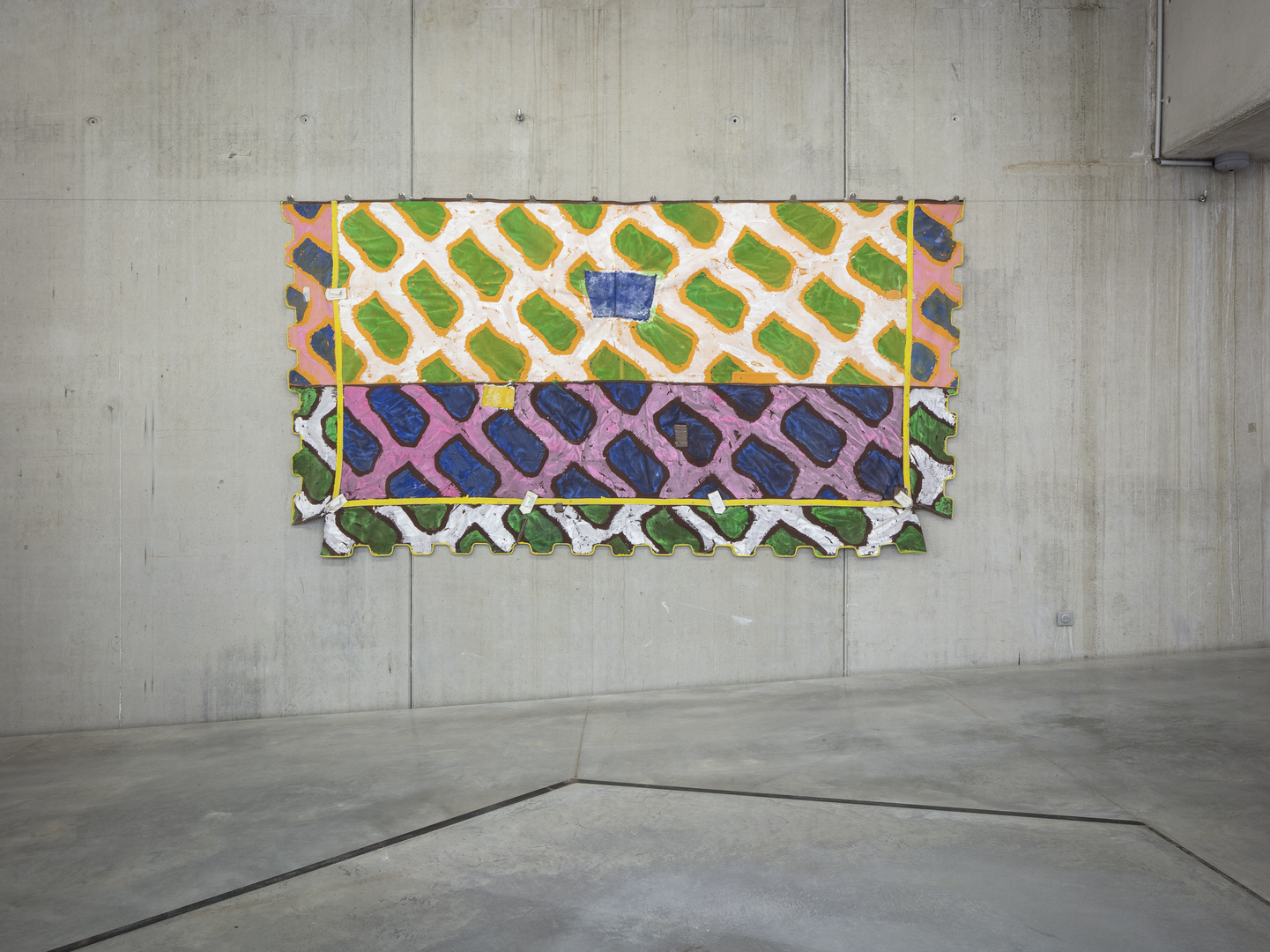
© Olivier Monge /Myop
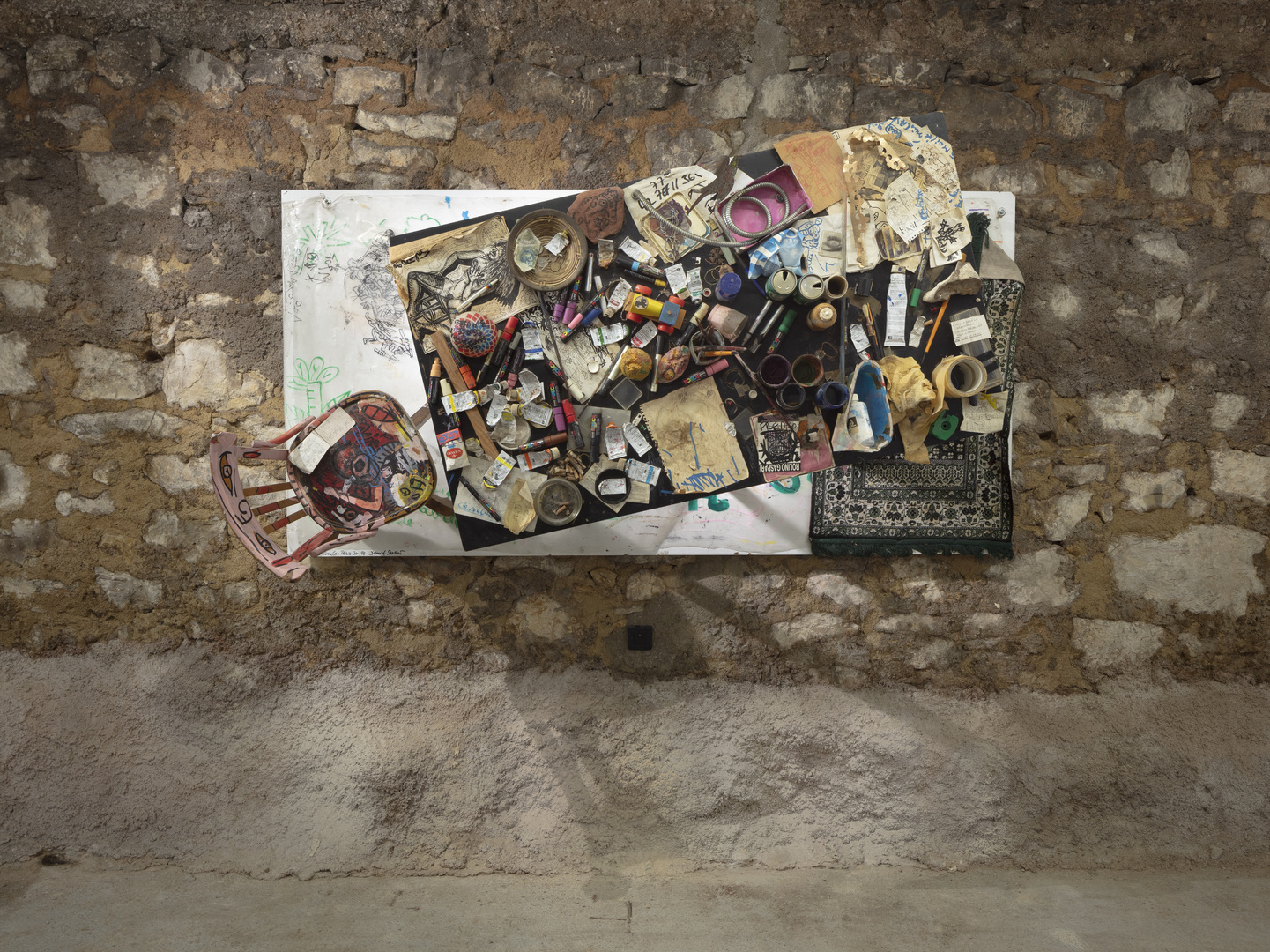
© Olivier Monge /Myop
Daniel Spoerri
(1930, Romania)
Palette Robert Combas, table de travail de plus en plus chargée, 1990
As one of the founding members of the Nouveaux Réalistes, Daniel Spoerri seeks to capture reality “as it is” using everyday objects and waste. Echoing the “Snare-Pictures,” in which the artist solidifies various dining tables as they are, the “Artists’ Palettes” series, which began in 1961, constructs a “psychological portrait” of the represented artists: here, the objects accumulated on the worktable of Robert Combas, a leading artist of the Free Figuration movement, reveal another facet of the artist.
Robert Combas
(1957, France)
Exotic, 1986
Fed by images from popular culture, from cinema to music—opposed to the prevalent minimal and conceptual art—Robert Combas is one of the emblematic members of the Free Figuration movement. Joyful, talkative, and teeming, his canvases are a “search for feeling,” as the artist explains. “Feeling is rhythm, it’s the mad drummer in the jungle and the voodoo dances, it’s the Rolling Stones copying old songs from black bluesmen and unwittingly creating new music.”
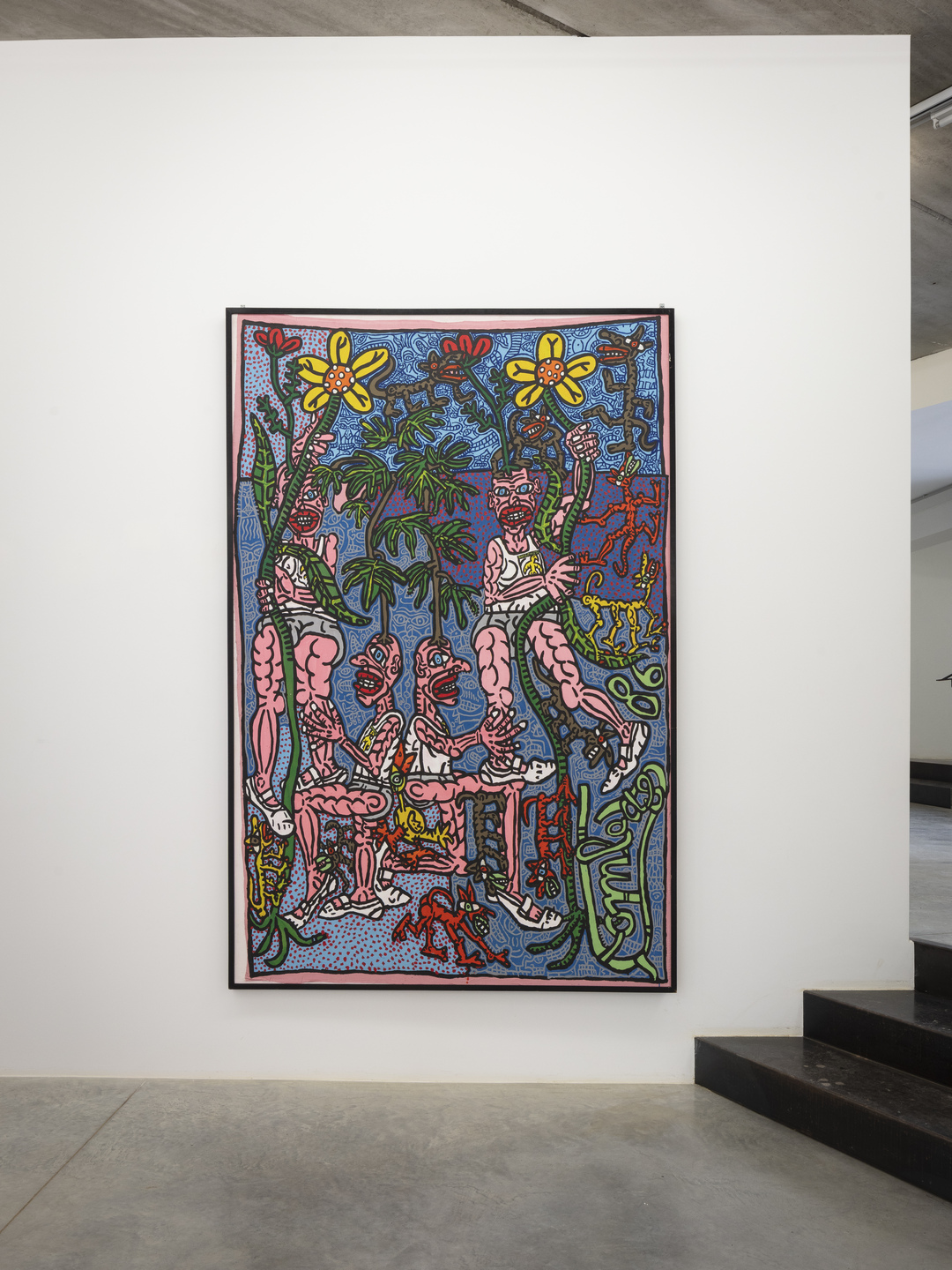
© Olivier Monge /Myop
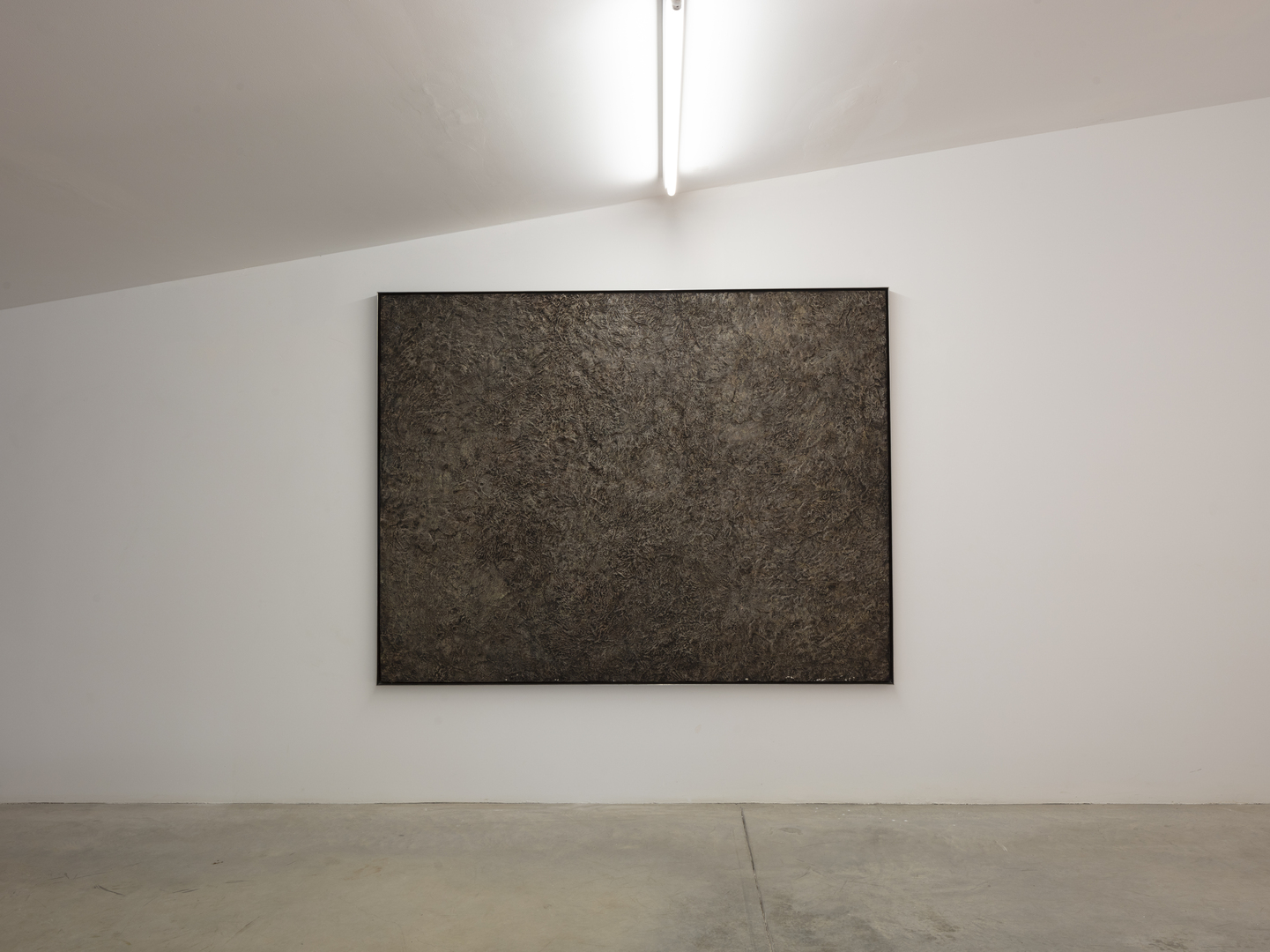
© Olivier Monge /Myop
Jean Dubuffet
(1901-1985, France)
Mur végétal, 1959
In December 1959, Jean Dubuffet initiated the “Matériologies” series, composed of 58 works that, devoid of any figurative references, are true celebrations of the soil and earth. Organic, shapeless, and almost alive, these works extend his reflection on the very subjects of art. Between the representation of reality and abstraction, Jean Dubuffet combines elements such as papier-mâché, botanical elements, and vinyl paste to capture the rich texture of the earth.
Olga de Amaral
(1932, Colombia)
Lienzo 32, 2013
Since the 1960s, Olga de Amaral has been exploring the aesthetic and cultural uses of textiles, interweaving her Colombian heritage with the modernist principles she encountered during her studies in the United States. While the title refers to “linen canvas,” typically used in painting, Lienzo 32 is based on the layering of two techniques: the weaving in the background and this “cascade” of painted linen threads remind us that this organic material was not only the emblematic support of painting but can also embody its transcendence.
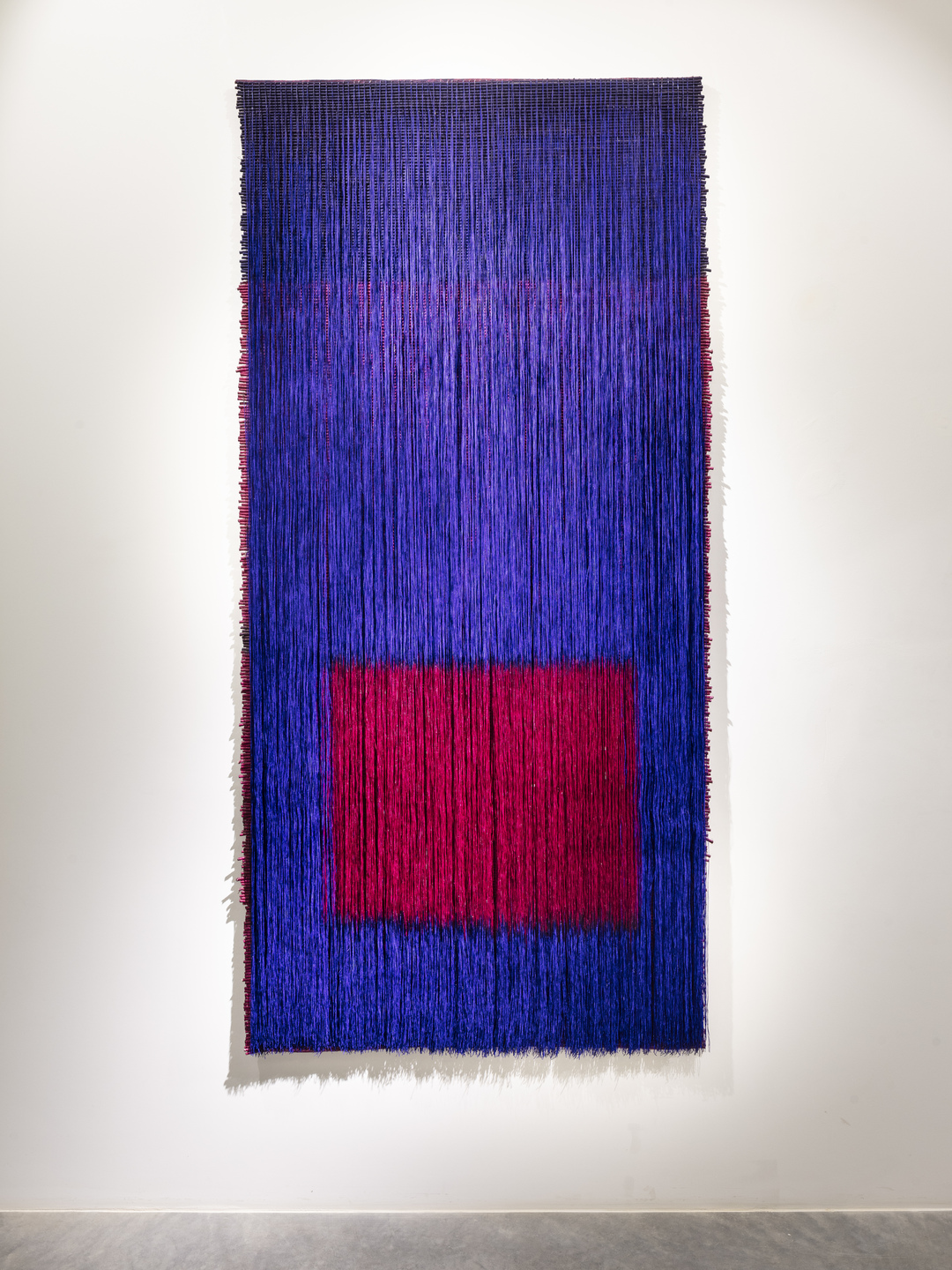
© Olivier Monge /Myop
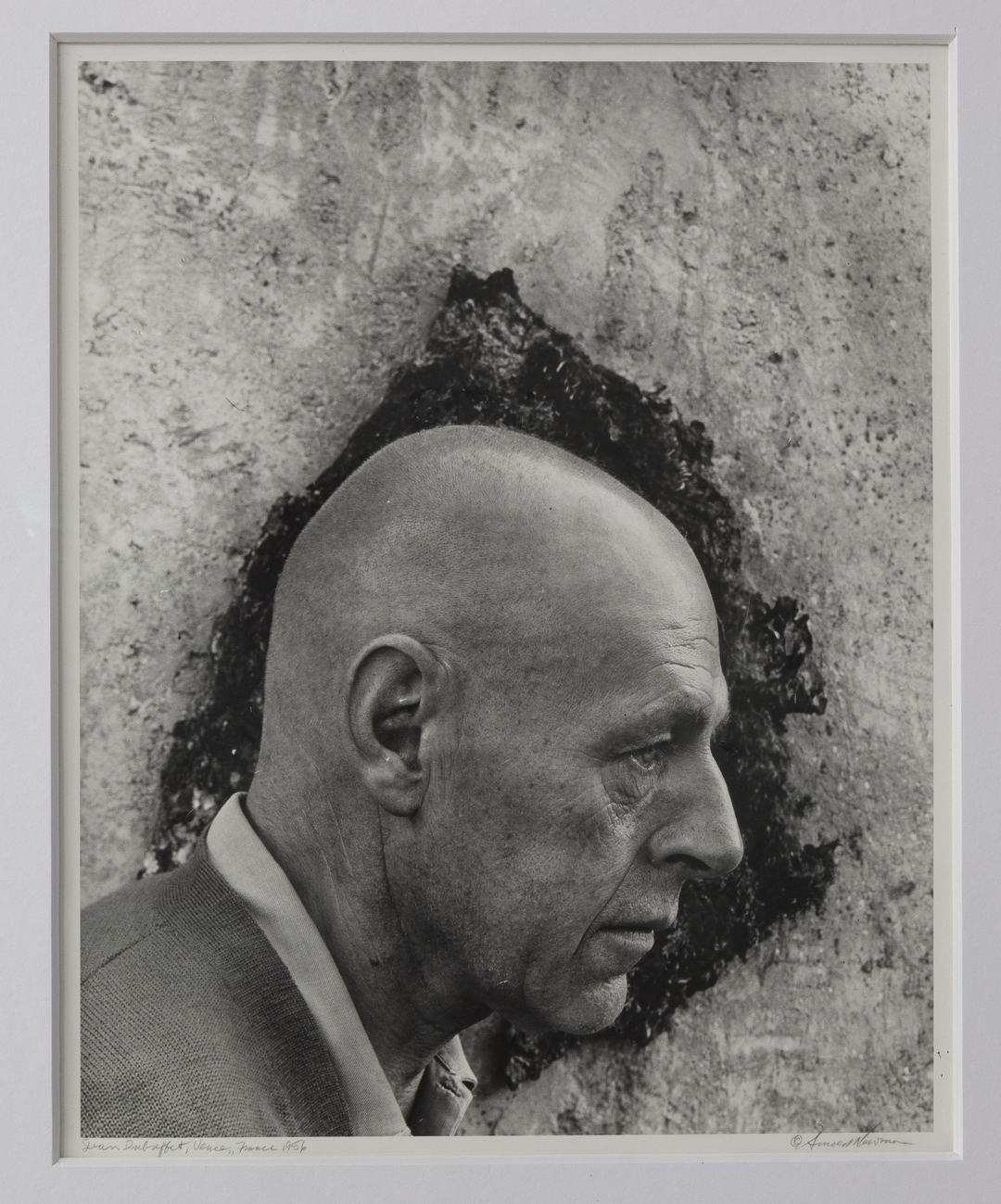
© Olivier Monge /Myop
Arnold Newman
(1918-2006, United States)
Jean Dubuffet, Vence, France, 1956
Renowned for his innovative approach to photographic portraiture from the 1940s — to the extent that he was dubbed the “father of environmental portrait” — Arnold Newman captured the eminent figures of his time, from Jean Arp to Frank Lloyd Wright, and including Igor Stravinsky or Leonard Bernstein. Like Jean Dubuffet, who is captured in profile in Vence where he resided between 1955 and 1961, all are photographed in an environment that characterizes them, from the office to the studio, and often, for artists, surrounded by their artworks or a source of inspiration.
Erwin Wurm
(1954, Austria)
Adorno as Oliver Hardy in The Bohemian Girl (1936) and the Burden of Desperation, 2006
With humor and surprise, sculptor Erwin Wurm diverts a number of objects, actions, or familiar figures into sometimes puzzling scenes. Here, the famous philosopher Theodor W. Adorno (1903-1969) takes on the guise of Oliver Hardy, the overweight character from the 1936 film “The Bohemian Girl.” This sculpture is a tribute to humor and lightness in art and serves as a playful rebuttal to Theodor W. Adorno’s ethical conception of humor.
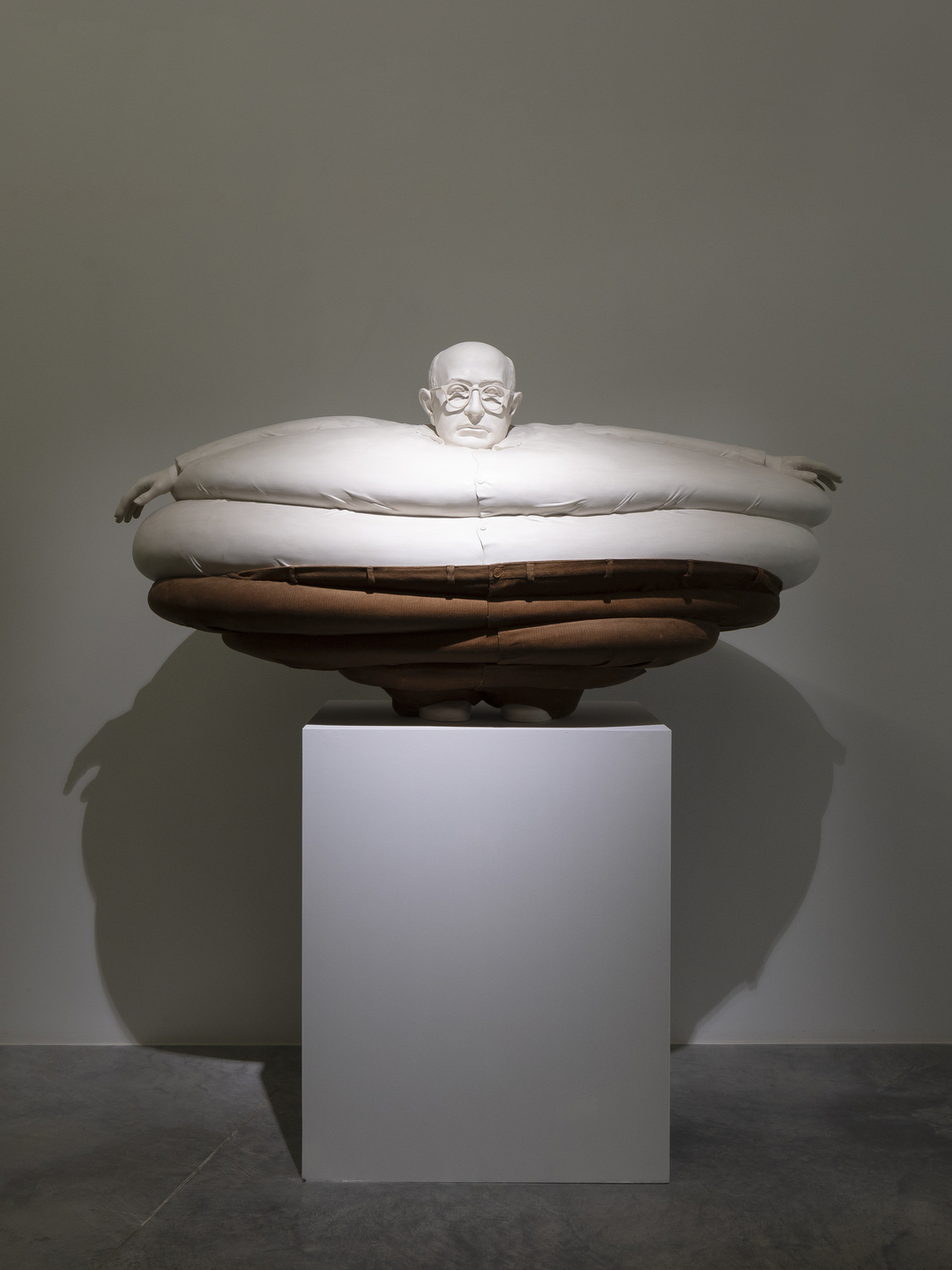
© Olivier Monge /Myop
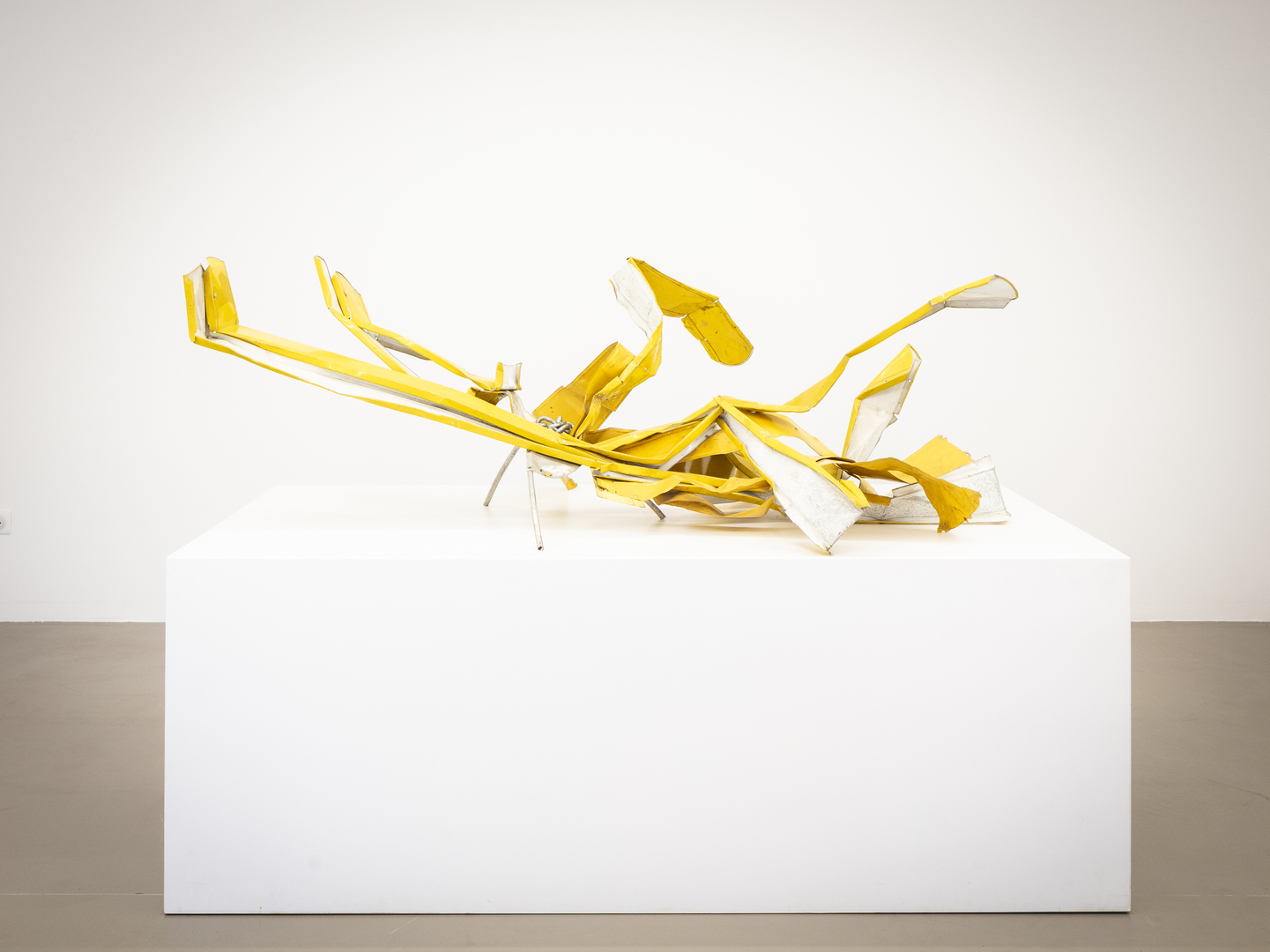
© Olivier Monge /Myop
Robert Rauschenberg
(1925-2008, United States)
Glut, ca. 1986-1995
Robert Rauschenberg ranks among the most influential artists of the 20th century, often regarded as a “neo-Dadaist” and precursor to pop art. After incorporating objects into his “Combine Paintings” in the 1950s—blurring the lines between painting and sculpture—he created the “Gluts” series (1986-1995): using remnants of the automotive industry, the artist reflects on the economic crisis that followed the oil glut in the American market.
Berlinde de Bruyckere
(1964, Ghent)
Arcangelo (Commanderie de Peyrassol), 2023
Through the exhibition City of Refuge I, which took place at the Commanderie de Peyrassol in 2023, Berlinde De Bruyckere explored the theme of the Arcangelo, an archaic figure associated with the notions of care, protection, violence, and resilience. Overlooking this emblematic parcel of Château Peyrassol, the archangel contributes to the centuries-old history of this place, which served as a refuge for pilgrims starting in the 13th century.
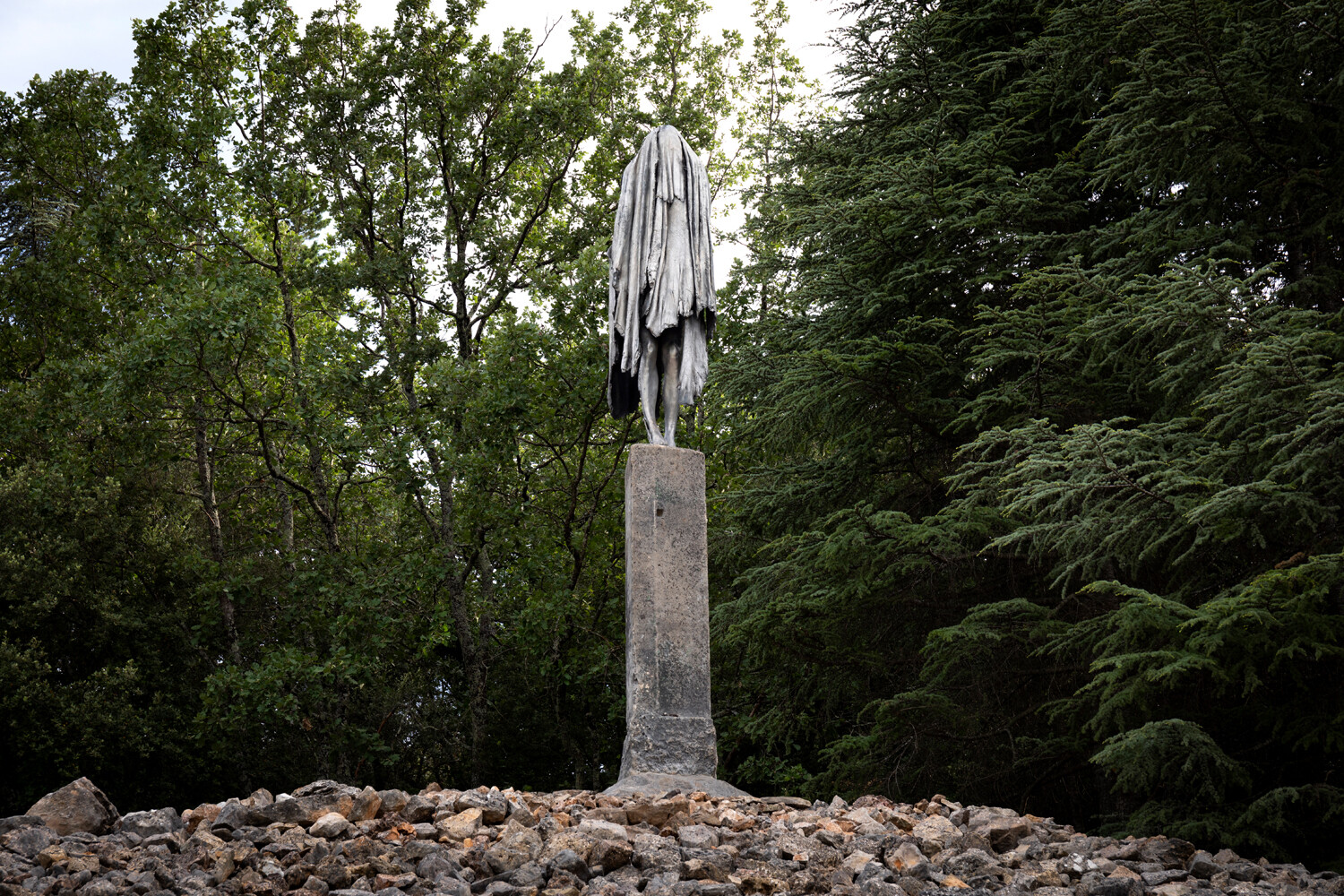
© Edwige Lamy
